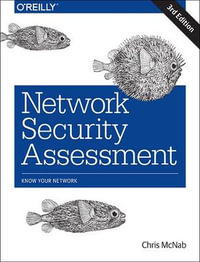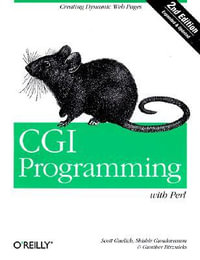Communication Networking is a comprehensive, effectively organized introduction to the realities of communication network engineering. Written for both the workplace and the classroom, this book lays the foundation and provides the answers required for building an efficient, state-of-the-art network-one that can expand to meet growing demand and evolve to capitalize on coming technological advances. It focuses on the three building blocks out of which a communication network is constructed: multiplexing, switching, and routing. The discussions are based on the viewpoint that communication networking is about efficient resource sharing.
The progression is natural: the book begins with individual physical links and proceeds to their combination in a network. The approach is analytical: discussion is driven by mathematical analyses of and solutions to specific engineering problems. Fundamental concepts are explained in detail and design issues are placed in context through real world examples from current technologies. The text offers in-depth coverage of many current topics, including network calculus with deterministically-constrained traffic; congestion control for elastic traffic; packet switch queuing; switching architectures; virtual path routing; and routing for quality of service. It also includes more than 200 hands-on exercises and class-tested problems, dozens of schematic figures, a review of key mathematical concepts, and a glossary.
This book will be of interest to networking professionals whose work is primarily architecture definition and implementation, i.e., network engineers and designers at telecom companies, industrial research labs, etc. It will also appeal to final year undergrad and first year graduate students in EE, CE, and CS programs.
- Systematically uses mathematical models and analyses to drive the development of a practical understanding of core network engineering problems.
- Provides in-depth coverage of many current topics, including network calculus with deterministically-constrained traffic, congestion control for elastic traffic, packet switch queuing, switching architectures, virtual path routing, and routing for quality of service.
- Includes over 200 hands-on exercises and class-tested problems, dozens of schematic figures, a review of key mathematical concepts, and a glossary.
Industry Reviews
This book combines an innovative and uniform representation of a variety of communication networks, simple to understand motivations for real design problems for these networks, intuitive approaches to solutions, and rigorous mathematical analysis where appropriate. It will be very valuable both as a textbook and as a reference for practitioners. --Bharat Doshi, Director of Transformational Communication, Johns Hopkins University, Applied Physics Laboratory It has been very difficult to write a textbook on networking that is relevant and rigorous because the field is diverse and fast changing. This book stands out in both providing the readers with the essential domain knowledge and equipping them with fundamental tools to analyze and design new systems as the networking field evolves." --Steven Low, Associate Professor, California Institute of Technology This book is a well-researched compendium of theoretical modeling applied to a number of practical networking problems. Some interesting topics of note are important insights in the design of packet switches, performance of TCP under various conditions, and the design of packet address prefix lookups. Although much of the material is mathematically advanced, the book contains a comprehensive set of appendices useful as a reference for the researcher or advanced practitioner. --Dr. David E. McDysan, Fellow, MCI Internet Architecture and Technology
























